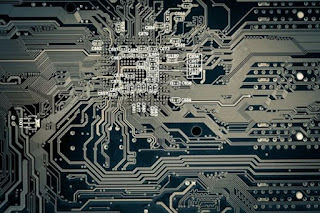Which Ethernet Network Cable Should We Use?

Choosing the right Ethernet network cable is crucial for
ensuring reliable and high-speed connectivity in your network infrastructure.
There are some types of Ethernet cables available, each with its own
specifications and use cases. In this guide, we will discuss the most common
Ethernet cable categories and their characteristics to help you make an
informed decision.
Category 5e (Cat5e) Cable:
Category 5e cables are an improved version of the older
Category 5 (Cat5) cables. They support data transfer speeds of up to 1000 Mbps
(1 Gbps) and are suitable for most residential and small office applications.
Cat5e cables are backward compatible with Cat5 cables and are capable of
handling both voice and data transmissions. They are relatively inexpensive and
widely available.
Category 6 (Cat6) Cable:
Cat6 cables offer higher performance compared to Cat5e
cables. They are designed to support data transfer speeds of up to 10 Gbps over
short distances (up to 55 meters) and can handle bandwidths of up to 250 MHz.
Cat6 cables are commonly used in larger office environments, data centers, and
for applications that require high-speed data transmission, such as video
streaming or online gaming.
Category 6a (Cat6a) Cable:
Cat6a cables are an enhanced version of Cat6 cables. They
provide improved performance and support higher data transfer speeds of up to
10 Gbps over longer distances (up to 100 meters). Cat6a cables are shielded,
which helps reduce crosstalk and electromagnetic interference (EMI), making
them ideal for environments with high levels of electrical noise. They are
commonly used in data centers, server rooms, and industrial settings.
Category 7 (Cat7) Cable:
Cat7 cables are designed to support even higher data
transfer speeds than Cat6a cables. They are capable of transmitting data at
speeds of up to 10 Gbps or even 40 Gbps over short distances. Cat7 cables are
shielded and use a more advanced shielding technique called "screen
shielded twisted pair" (SSTP) or "fully shielded twisted pair"
(FSTP). They offer superior resistance to crosstalk and EMI, making them
suitable for high-performance applications and environments with significant
interference.
Category 8 (Cat8) Cable:
Cat8 cables are the latest addition to the Ethernet cable
family. They are designed to support data transfer speeds of up to 25 Gbps or
40 Gbps over relatively short distances (up to 30 meters). Cat8 cables use a
new connector type called "RJ45 8P8C" and can handle bandwidths of up
to 2000 MHz. They are commonly used in data centers, server farms, and other
high-demand environments that require ultra-fast and reliable connectivity.
When choosing the right Ethernet cable for your specific
needs, consider the following factors:
Required data transfer speed: Determine the maximum speed
you need to support your network activities.
Cable length: Consider the distance between devices and
ensure the selected cable can handle the required speed over that distance.
Environmental factors: Evaluate the presence of electrical
noise or interference that may require shielded cables.
Future-proofing: If you anticipate future upgrades or higher
speed requirements, consider investing in a higher category cable to avoid the need
for frequent replacements.
In summary, Cat5e cables are suitable for most home and
small office setups, while Cat6 and Cat6a cables are recommended for higher
performance and larger environments. Cat7 and Cat8 cables are more specialized
and designed for specific applications that demand ultra-fast and reliable
connectivity. Assess your requirements carefully and choose the appropriate
Ethernet cable category to ensure optimal network performance.


